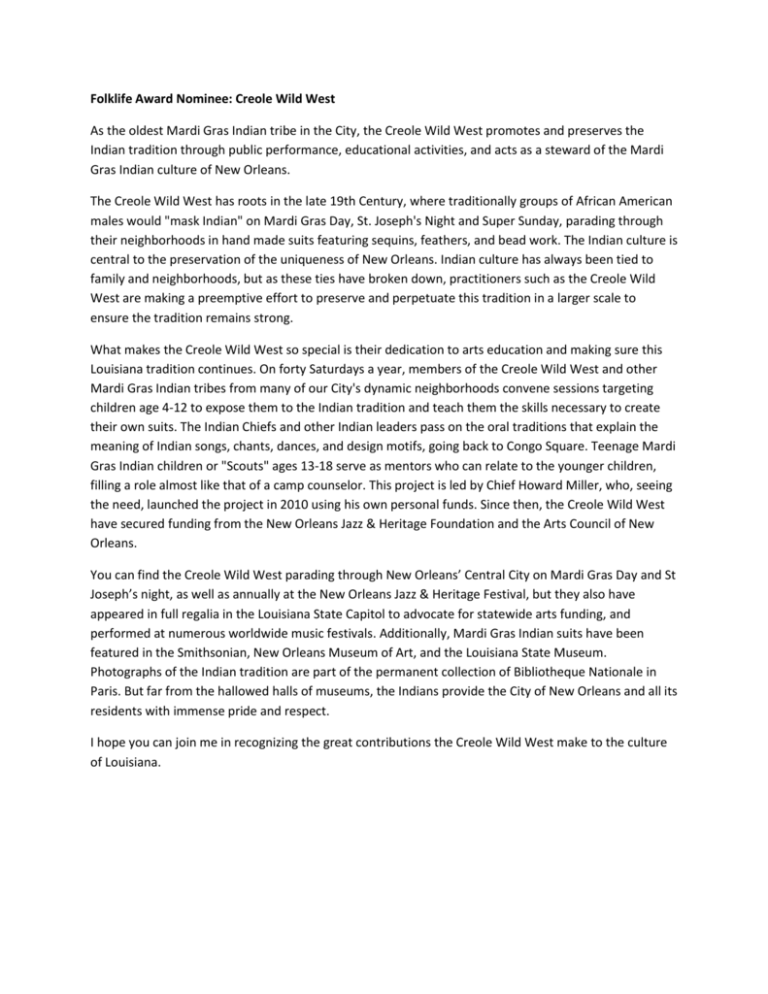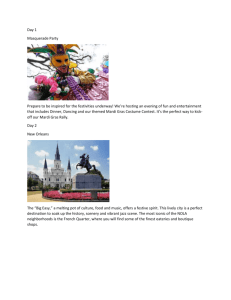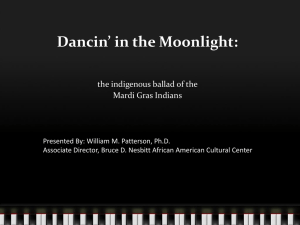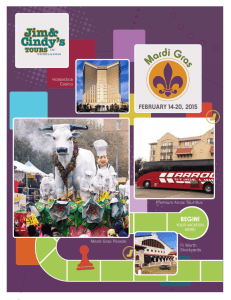Folklife Award Nominee CWW
advertisement

Folklife Award Nominee: Creole Wild West As the oldest Mardi Gras Indian tribe in the City, the Creole Wild West promotes and preserves the Indian tradition through public performance, educational activities, and acts as a steward of the Mardi Gras Indian culture of New Orleans. The Creole Wild West has roots in the late 19th Century, where traditionally groups of African American males would "mask Indian" on Mardi Gras Day, St. Joseph's Night and Super Sunday, parading through their neighborhoods in hand made suits featuring sequins, feathers, and bead work. The Indian culture is central to the preservation of the uniqueness of New Orleans. Indian culture has always been tied to family and neighborhoods, but as these ties have broken down, practitioners such as the Creole Wild West are making a preemptive effort to preserve and perpetuate this tradition in a larger scale to ensure the tradition remains strong. What makes the Creole Wild West so special is their dedication to arts education and making sure this Louisiana tradition continues. On forty Saturdays a year, members of the Creole Wild West and other Mardi Gras Indian tribes from many of our City's dynamic neighborhoods convene sessions targeting children age 4-12 to expose them to the Indian tradition and teach them the skills necessary to create their own suits. The Indian Chiefs and other Indian leaders pass on the oral traditions that explain the meaning of Indian songs, chants, dances, and design motifs, going back to Congo Square. Teenage Mardi Gras Indian children or "Scouts" ages 13-18 serve as mentors who can relate to the younger children, filling a role almost like that of a camp counselor. This project is led by Chief Howard Miller, who, seeing the need, launched the project in 2010 using his own personal funds. Since then, the Creole Wild West have secured funding from the New Orleans Jazz & Heritage Foundation and the Arts Council of New Orleans. You can find the Creole Wild West parading through New Orleans’ Central City on Mardi Gras Day and St Joseph’s night, as well as annually at the New Orleans Jazz & Heritage Festival, but they also have appeared in full regalia in the Louisiana State Capitol to advocate for statewide arts funding, and performed at numerous worldwide music festivals. Additionally, Mardi Gras Indian suits have been featured in the Smithsonian, New Orleans Museum of Art, and the Louisiana State Museum. Photographs of the Indian tradition are part of the permanent collection of Bibliotheque Nationale in Paris. But far from the hallowed halls of museums, the Indians provide the City of New Orleans and all its residents with immense pride and respect. I hope you can join me in recognizing the great contributions the Creole Wild West make to the culture of Louisiana.







